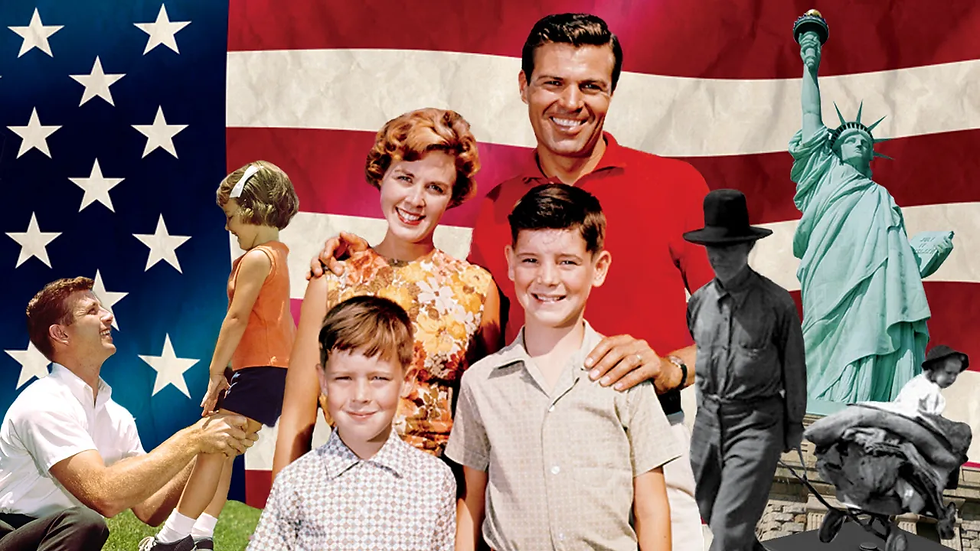The American Dream or Nightmare
- Selen Arslan
- Dec 13, 2023
- 3 min read
Songs have been composed; books have been written, and movies have been produced about all the beauties that the United States has to offer. But do we even know if they reflect the reality or are pure fiction?
“The American Dream” is a way of thinking and a tradition that defends the idea that success, welfare, and fame can be achieved through hard work. Until the last quarter of the 20th century, the symbols of the American dream in the USA were summarized as having a house with a garden and owning a car. The term was put forward by James Truslow Adams in 1931, stating that no matter what social class you’re in or wherever you were born, life should be better, richer, and fuller for everyone, and each person should be given opportunities based on their achievements and talents. From the start of the 19th century the idea of getting money easily and quickly got more popular by day. With this idea of getting money quickly developing, the actual idea and purpose of the American Dream got debunked and, thus, lost its meaning.
The American Dream’s roots originate from the Declaration of Independence, which points out that “all men are created equal” with the right to life, liberty, and the pursuit of happiness. By this information, it’s inferable that the whole concept actually started as a way of liberty and independence, but with wrong usage and critics, it turned out to become an entirely different understanding.
The critics state that America focuses on individualism, which results in materialism, capitalism, consumerism, and a lack of worker solidarity. In 2015, only a total of 10.5 percent of American workers were members of a labor union, an aspect on which the American Dream was criticized. Along with this, the Dream has also been criticized for practicing American exceptionalism since it doesn’t acknowledge the hardships many non-privileged Americans face, such as American slavery or Native American genocide. In the book “Of Mice and Men,” the author John Steinbeck thoroughly discusses this topic. The main characters are George and Lenny, whose biggest goal in life is to earn enough money to buy their own house and grow their own agricultural products.
However, due to the many hardships life brings along, they end up unsuccessful in achieving their dreams. Without giving away everything the book has to offer, I can say that the storyline follows these characters’ journeys in pursuit of their ultimate goal. Yet, the most striking point is that no matter how far along George and Lenny think they have come in their journey, the difficulties of achieving their dream remain the same. That’s when we have to ask ourselves the question: is this American dream truly achievable or is it a mere imagination?

In typical movies, we frequently come across a main character whose main goal is to move to New York, buy a two-story penthouse, and stare at their view of the Empire State building for hours. We see people all over the internet, from movies to billboards, moving to the USA, and most of the time, these characters believe that their struggles will instantly disappear once they smell the NYC air. But does it ever turn out that way?
However, this concept certainly does not take external factors into account. It is full-heartedly believed that success can be achieved by working hard, and if someone fails, it is due to their own inadequacy. This belief is said to be a method of “making poor people living in the USA believe that their failures are their own fault” by certain masses and critics. Some also describe it as a type of marketing technique for the United States to shine like it aims to.
In the end, we come to realize that the American Dream is all about class mobility. It feeds people with the idea that regardless of where they were born or what financial class they belong to, they can escape poverty by working hard. As George Carlin once said, “That’s why they call it the American Dream, because you have to be asleep to believe it.”.
Works Cited:
Mahfi Eğilmez, Kendime Yazılar, Accessed 22 Nov. 2023
Markut, Amerikan Rüyası, Accessed 25 Nov. 2023
Wikipedia, Amerikan Rüyası, Accessed 30 Nov. 2023

